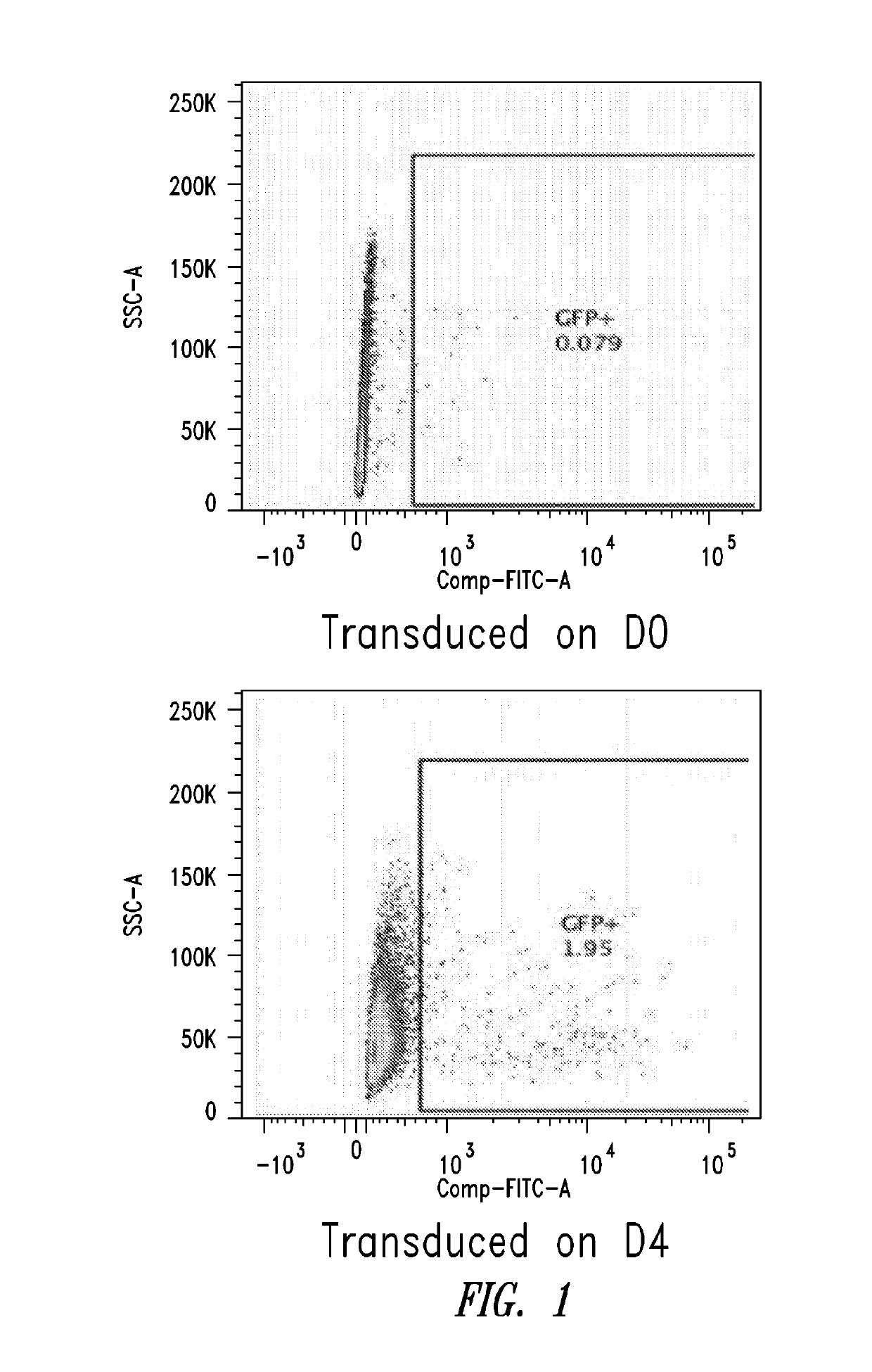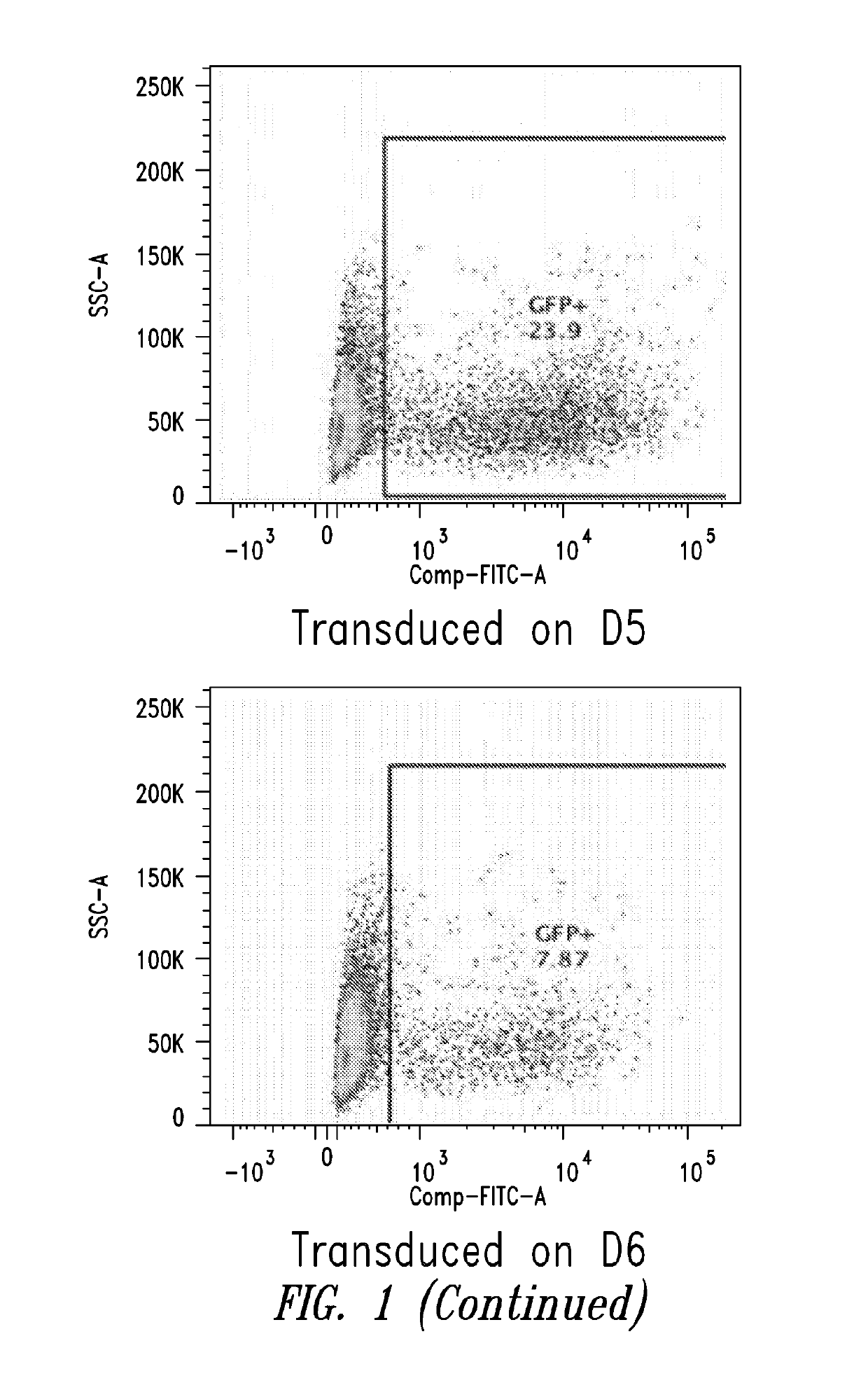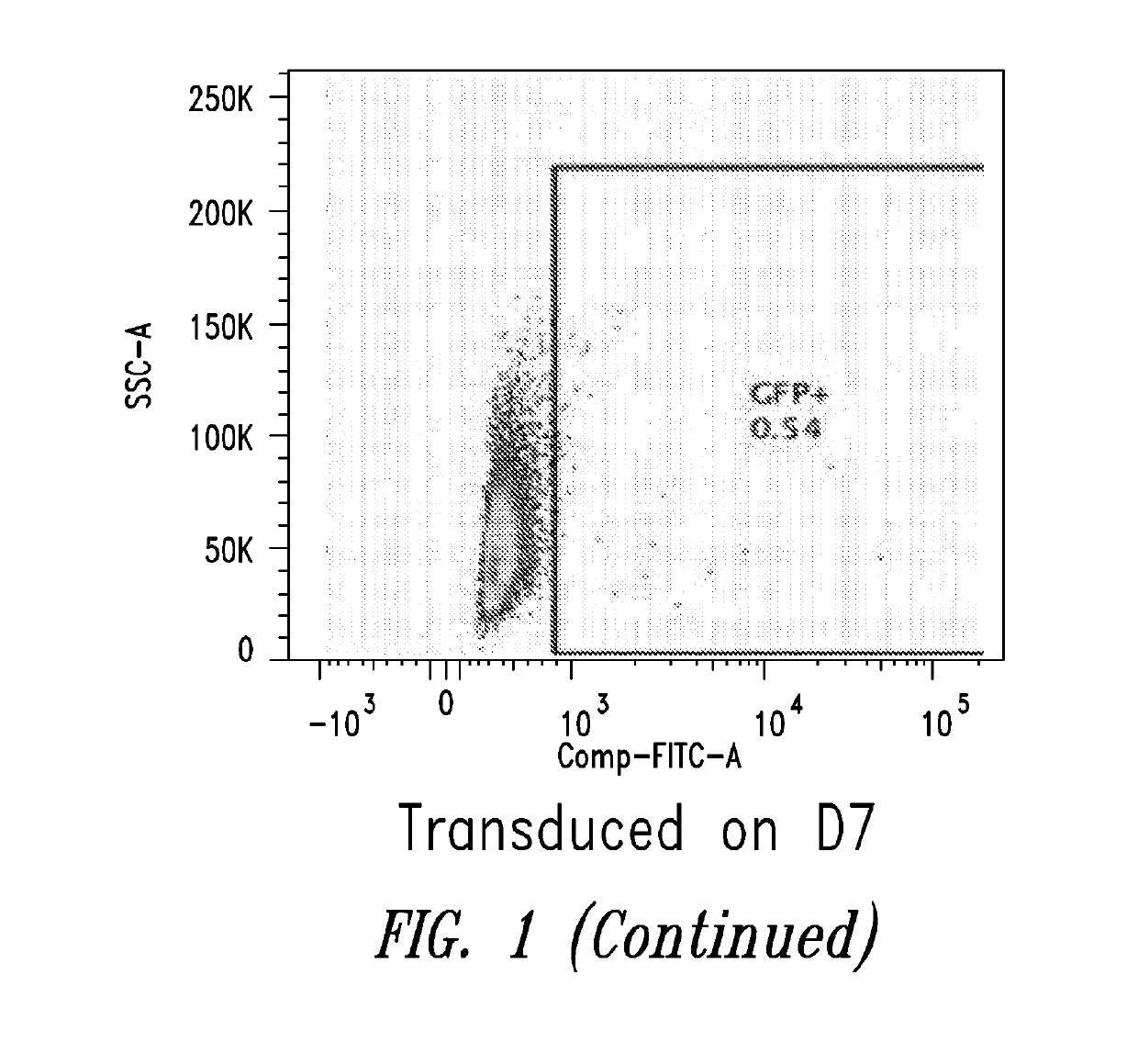Methods for in vitro memory B cell differentiation and transduction with VSV-G pseudotyped viral vectors
a technology of pseudotyped viral vectors and in vitro memory b cells, which is applied in the field of in vitro memory b cell differentiation and transduction with pseudotyped viral vectors, can solve the problems of difficult introduction of genes using retroviral vectors exhibiting low infectivity against such non-dividing cells, activated and dividing b cells are also not easily genetically modified, etc., to achieve high density, promote differentiation and activation, and high level
- Summary
- Abstract
- Description
- Claims
- Application Information
AI Technical Summary
Benefits of technology
Problems solved by technology
Method used
Image
Examples
example 1
In Vitro Memory B Cell Differentiation and Transduction with VSV-G Pseudotyped Lentivirus
[0099]This Example describes the in vitro differentiation of plasmablasts and plasma cells and transduction of same with VSV-G virus. The present methods demonstrate that after the 2nd phase of the culture system, about 20% transduction is observed as compared to only 5% using methods known in the art.
[0100](For the transduction: No spinnoculation, just add viral supernant with protamine sulfate and incubate for overnight, change medium)
[0101]Memory B cells were isolated using the memory B cell isolation protocol described below.[0102]1. D1: resuspend purified memory B cell into 1.5E5 / ml medium #1, supplemented with combination of cytokines, incubate for 3 days.[0103]2. D4: cells were harvested, washed with base medium, spin down at 300 g for 8 mins, and resuspend cells in medium #2, supplemented with combination of cytokines.[0104]3. D6: Cells were collected and counted, resuspend cells at 1.5E...
PUM
| Property | Measurement | Unit |
|---|---|---|
| concentration | aaaaa | aaaaa |
| nucleic acid | aaaaa | aaaaa |
| adhesion | aaaaa | aaaaa |
Abstract
Description
Claims
Application Information
 Login to View More
Login to View More - R&D
- Intellectual Property
- Life Sciences
- Materials
- Tech Scout
- Unparalleled Data Quality
- Higher Quality Content
- 60% Fewer Hallucinations
Browse by: Latest US Patents, China's latest patents, Technical Efficacy Thesaurus, Application Domain, Technology Topic, Popular Technical Reports.
© 2025 PatSnap. All rights reserved.Legal|Privacy policy|Modern Slavery Act Transparency Statement|Sitemap|About US| Contact US: help@patsnap.com



